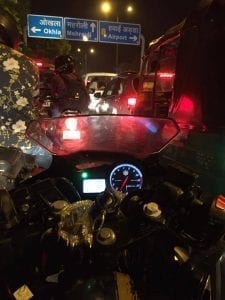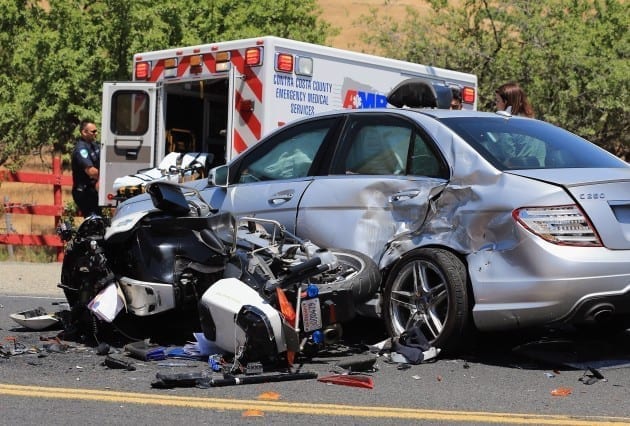By understanding the importance of these steps and following them, you can be better prepared to handle the aftermath of a motorcycle collision and protect your well-being and financial state.
Riding a motorcycle in San Bernardino involves specific laws and regulations designed to protect the safety and well-being of all road users. Whether you are a new rider or have years of experience riding, knowing and understanding San Bernardino’s motorcycle laws is essential for maintaining legal compliance and ensuring a safe riding experience. By staying well-informed and vigilant, motorcyclists can contribute to safer roads and protect themselves and others.
What Are the San Bernardino Motorcycle Laws?
Riding a motorcycle in San Bernardino comes with a unique set of responsibilities and legal requirements designed to protect the well-being of all road users and pedestrians. Understanding and complying with these laws is crucial for new and experienced motorcycle riders.
- Licensing—Before applying for an M1 motorcycle license, riders must have a valid driver’s license to operate a motorcycle legally. This involves passing a written test, skills test, and vision test. Riders under 21 must complete the California Motorcyclist Safety Program (CMSP) training course.
- Helmets—San Bernardino law requires that all motorcycle riders and passengers wear helmets that meet federal safety standards while operating the motorcycle. This law is strictly enforced, reducing the risk of severe head injuries while prioritizing the rider’s comfort and safety.
- Insurance—Riders who own a motorcycle in San Bernardino must have liability insurance. They must carry proof of insurance and present it upon request by law enforcement. This law ensures that riders are financially protected in case of an accident.
- Traffic Laws—Motorcyclists in San Bernardino must obey the same traffic laws as all other motorists. This includes obeying speed limits, traffic signals, and signs. Lane splitting, driving between lanes of stopped or slow-moving cars, is legal in California but must be done safely. Riders must know and understand specific regulations, such as not riding on sidewalks and avoiding reckless and unsafe driving.
Adhering to these laws is essential for maintaining safety and legal compliance. Being well-informed and vigilant about these regulations protects the rider and contributes to safer roads for everyone.

What to Do After a Motorcycle Collision
Being in a motorcycle collision can be a traumatic and confusing experience, but knowing and understanding the proper steps to take can make a significant difference in your recovery and legal standing. Each of these steps below plays a vital role in protecting your well-being, securing your financial stability, and navigating the aftermath of a motorcycle accident:
- Ensure Safety — The priority after an accident is to ensure your safety and the safety of others involved. If you can move, get to a safe location away from traffic. Turn on hazard lights to alert other drivers and prevent further accidents. Check for any immediate dangers like fuel leaks or fire hazards.
- Seek Medical Attention — Even if you feel fine, seeking medical attention immediately after a collision is essential. Some injuries might not be immediately apparent but can have serious long-term effects. Call 911 if there are severe injuries and wait for emergency medical services to arrive. If the injuries are minor, visiting a doctor as soon as possible is still crucial for a thorough check-up.
- Report the Accident—Reporting the accident to the police is a critical step. The police will document the incident and create an official report, which is valuable for insurance claims and potential legal actions. Be as detailed as possible when providing your account of the events.
- Exchange Information — Exchange essential information with the other parties involved in the collision as soon as possible. This includes names, contact information, driver’s license numbers, vehicle registration details, and insurance information. This information is essential when filling out insurance claims and any legal follow-up.
- Notify Insurance Company — As soon as possible after the collision, contact your insurance company to report the incident. Provide them with all the details and any documentation you have collected. Your insurer will guide you through the claims process and explain the next steps.
- Seek Legal Advice — Consulting with a motorcycle accident attorney can be beneficial, especially when there are significant injuries, disputes about fault, or potential legal claims. An attorney can help you understand your rights and help you navigate the legal process.
By understanding the importance of these steps and following them, you can be better prepared to handle the aftermath of a motorcycle collision and protect your well-being and financial state.
Contact a San Bernardino Motorcycle Accident Lawyer Today
If you or a loved one has been involved in a motorcycle collision, navigating the aftermath can be overwhelming. Experienced attorneys are available to help you understand your rights and guide you through the process of dealing with San Bernardino’s motorcycle laws. They can assist in managing the complexities that follow a motorcycle collision, ensuring your peace of mind. Contact a personal injury lawyer today for a consultation.


Join the conversation!